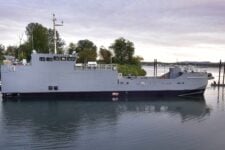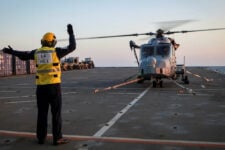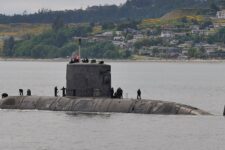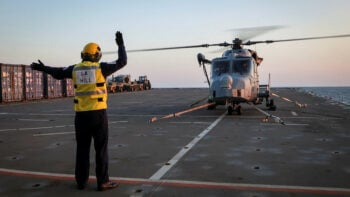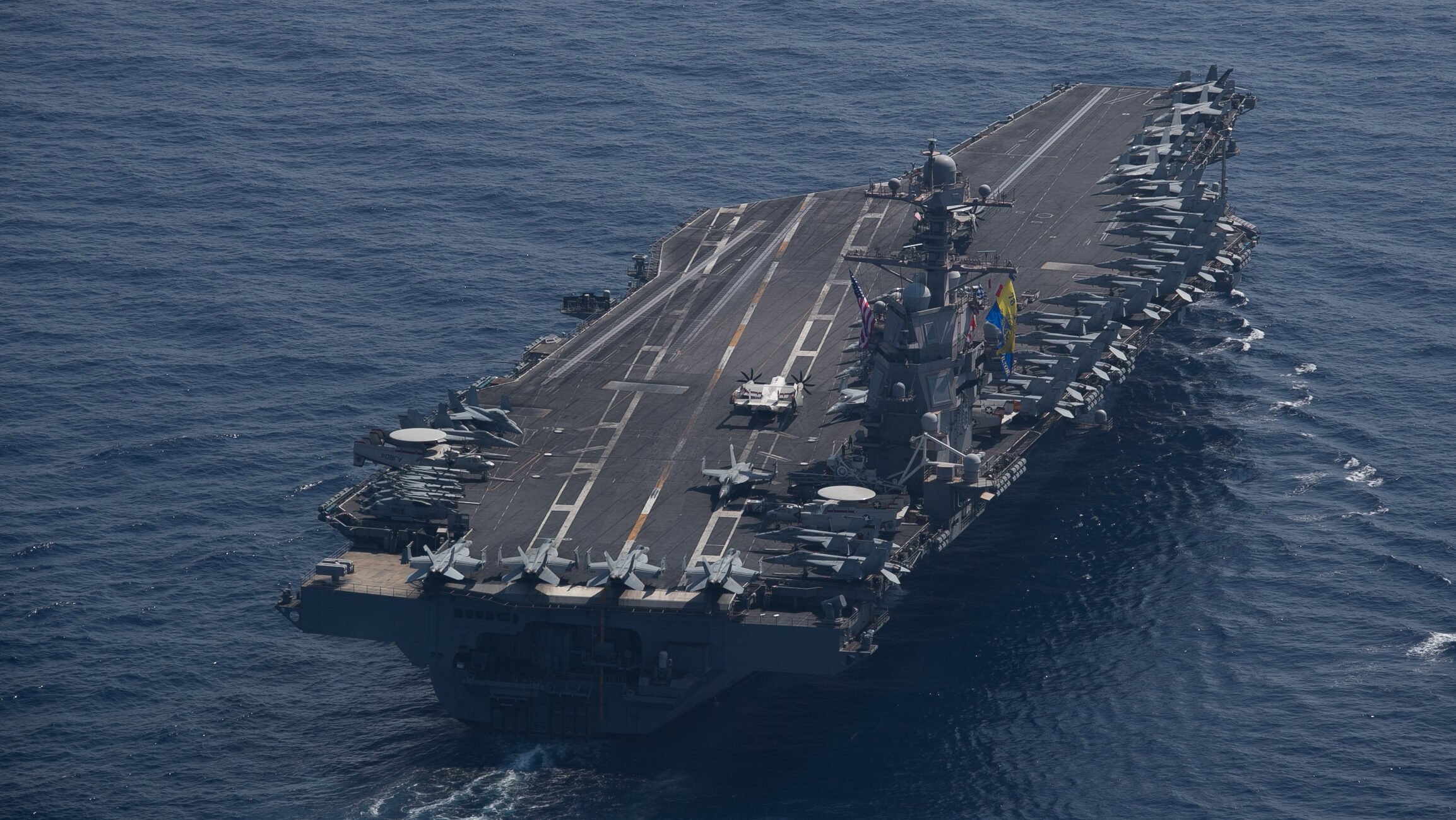
The world’s largest aircraft carrier USS Gerald R. Ford (CVN 78) transits the Mediterranean Sea, Aug. 21, 2023. (U.S. Navy photo by Mass Communication Specialist 2nd Class Jackson Adkins)
WASHINGTON — Despite public lobbying by industry, the Navy’s newly released budget request pushes the procurement of the fifth Gerald Ford-class aircraft carrier from 2028 to 2030. Service officials said they hope to stem damage to industry through industrial base investments, ongoing maintenance work and a steady stream of advanced procurement funding.
The fifth aircraft carrier, CVN-82, was previously projected to be put on contract — potentially as a block buy with CVN-83 — in fiscal year 2028. That timeline was already one year later than industry’s preferred cadence of one ship per four years. The Navy inked the dual-ship contract with HII for both Enterprise (CVN-80) and Doris Miller (CVN-81) in January 2019.
In a briefing with reporters Monday, Rear Adm. Ben Reynolds, deputy assistant secretary of the Navy for budget, didn’t explicitly address the issue of why the carrier procurement was delayed, but he and Under Secretary Erik Raven have emphasized how the defense spending caps in the Fiscal Responsibility Act of 2023 forced the service to make “hard decisions.” If the Navy had stuck with its initial plan to buy CVN-82 in FY28, that would have required advanced procurement funding in FY25 to begin buying long-lead-time materials.
However, Reynolds said he believed that advanced procurement funding starting in FY27 would mitigate some of the impacts felt by the industrial base stemming from the delay.
“As you know, this industrial base is tight and the carriers are built in the same yards that our Colombia[-class submarines] are built and our Virginias[-class submarines] are built and that we do” refueling and complex overhauls, he added.
Reynolds connecting the carrier and submarine industrial bases (SIB) was a reference to the investments the new budget plans to make into the SIB — a little more than $11 billion over the next five years. In other words, Reynolds was arguing that cash infusions for one necessarily benefits the other.
Refueling and complex overhauls (RCOH) are major mid-life maintenance availabilities scheduled at around 25 years into a carrier’s life and represent significant work for the industrial base. The new budget includes roughly $7 billion for the first of three full years of funding for that work to be done on the Harry S. Truman (CVN-75). The budget request also projects the John C. Stennis (CVN-74), which is currently undergoing its RCOH, will be redelivered to the Navy in October 2026.
The Navy is “working with everything we can do to unlock the capacity, and I think that the initiatives that we’re doing, plus the [advanced procurement] will do everything we can to get after that,” said Reynolds.
A spokesman for HII, the Navy’s sole prime contractor for both new carrier construction and RCOHs, told Breaking Defense on Monday the budget request is the “first step in a long process, so it would be inappropriate to speculate on the specific outcomes which will result from congressional consideration of this request.”
“As previously stated, any deviation that lengthens intervals between platforms compared to previously approved shipbuilding plans and forecasts is concerning because of the potential disruption to our supplier base which continues its recovery amid significant levels of demand for its materials and products,” said Todd Corillo, spokesman for HII’s Newport News Shipbuilding.
Breaking Defense in January reported that a survey, conducted by the Aircraft Carrier Industrial Base Coalition, found that an overwhelming number of suppliers were facing challenges due to inflation, material availability and delivery as well hiring, training and retaining their workforce. It also projected that nearly half of advanced procurement suppliers are expected “to have stopped continuous production (i.e ‘go cold’) for their respective CVN material/equipment” by 2028.
“When we deviate from that schedule that’s been previously identified, that is where the going cold starts to come into play,” Lisa Papini, chairwoman of ACIBC, told Breaking Defense at the time. “And that’s where the concern is on that schedule.”
